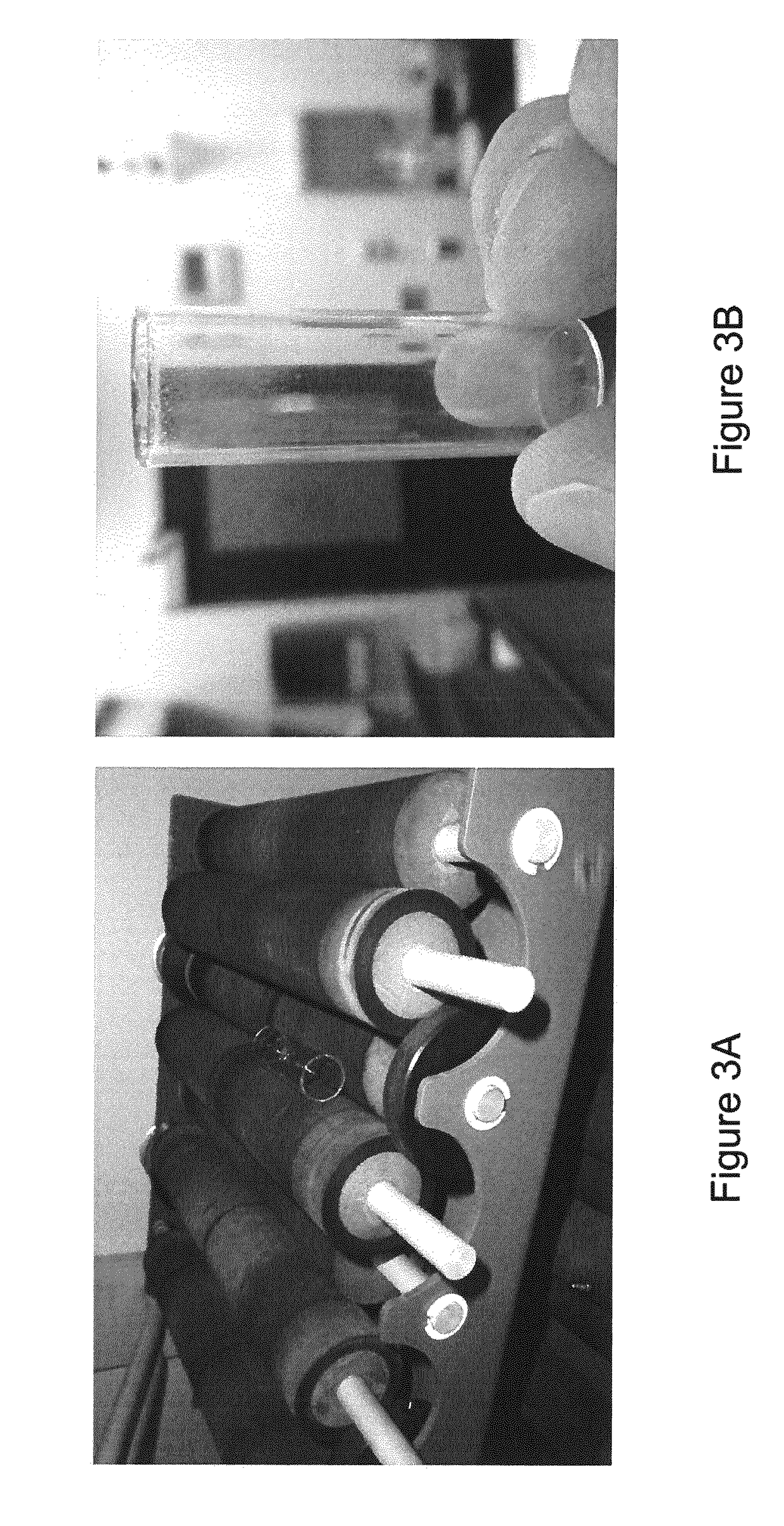Compositions and methods for repelling and killing ticks and detachment of feeding ticks
- Summary
- Abstract
- Description
- Claims
- Application Information
AI Technical Summary
Benefits of technology
Problems solved by technology
Method used
Image
Examples
examples
[0078]The Examples that follow are illustrative of specific embodiments of the invention, and various uses thereof. They are set forth for explanatory purposes only and are not taken as limiting the invention.
example no.1
Example No. 1: Development of Nootkatone Formulations
Overview
[0079]Nootkatone (obtained from oxidation of fermentation-derived valencene, “nootkatone ex valencene” or “NxV” with >98% purity) formulations for topical application were developed to determine whether such nootkatone and formulations thereof can repel and / or kill ticks on an animal's skin. Further, derivatives of nootkatone ex valencene were also tested for repellent activity.
Experimental Design
[0080]Laboratory testing on ticks established that 2% nootkatone nootkatone ex citrus) can repel and kill ticks. Therefore, new formulations with working concentrations of 2% nootkatone were sought. Specifically, a nootkatone-containing spray, nootkatone-containing lotion, and a nootkatone-containing soap were developed. Separately, derivatives of the nootkatone used herein, namely 1,10-dihydronootkatone, 11,12-dihydronootkatone, and tertrahydronootkatone were evaluated for biocidal activity.
[0081]Initially, solvent dissolution te...
example no.2
Example No. 2: Determination of Repellent Activity
Overview
[0103]The repellent activity of the preferred space spray, soap, and cream were evaluated from Example No. 1 using a human finger assay. Further, a shell-vial assay was performed on the preferred space spray, soap, and cream along with the nootkatone derivatives.
Experimental Design
[0104]Human Finger Trial
[0105]A human index finger was divided into three zones, as shown in FIG. 2, including a formula treated zone in the center surrounded by untreated zones.
[0106]Ten nymphal ticks were introduced to the untreated-introduction zone (tip of the index finger). Once the ticks are introduced, the assay was run for 5 minutes with the finger held vertically (ticks quest against gravity). The percent repellency was determined by # / 10 that did not cross the treated zone. Products were tested at 10 min, 1, & 2 hr post-treatment along with blank controls, which were the same formulations without nootkatone. Ten ticks tested at each time p...
PUM
 Login to View More
Login to View More Abstract
Description
Claims
Application Information
 Login to View More
Login to View More - R&D
- Intellectual Property
- Life Sciences
- Materials
- Tech Scout
- Unparalleled Data Quality
- Higher Quality Content
- 60% Fewer Hallucinations
Browse by: Latest US Patents, China's latest patents, Technical Efficacy Thesaurus, Application Domain, Technology Topic, Popular Technical Reports.
© 2025 PatSnap. All rights reserved.Legal|Privacy policy|Modern Slavery Act Transparency Statement|Sitemap|About US| Contact US: help@patsnap.com



